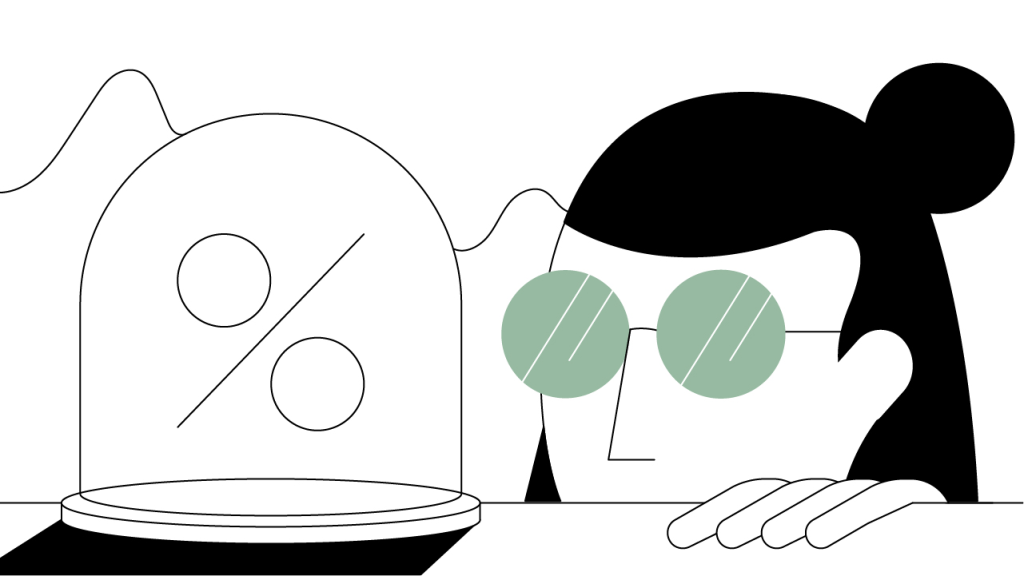Contents
Understanding Interest Rates
As crypto lending platforms continue to grow, the topic of interest rates for cryptocurrencies will gain importance. Now’s a good time to review the basics.

Summary
Interest is the cost of borrowing money (or the reward for lending money). Usually, central banks set interest rates, like the Federal Reserve in the U.S. Lending institutions — commercial banks, credit unions, and the like — then calculate interest as a percentage of the principal loan and add it to the total cost of a loan. All industry sectors pay close attention to changes in interest rates, as they affect consumer and corporate debt, the health of financial markets, and the economy as a whole. Borrowing and lending money can generate activity in cryptocurrency markets in two ways. Interest rates might attract new investors to crypto via a recognizable way of thinking about digital assets, while adding a degree of comfort. And for those already holding crypto, interest rates could offer an incentive to lend it, thus contributing to liquidity and the flow of assets.
How Do Interest Rates Work?
Lenders charge interest on loans for both individuals and corporations. Individuals borrow money to purchase big-ticket items like a home, car, or college tuition. Likewise, businesses use borrowed funds, or commercial debt, to fund their long-term projects and investments. Banks also borrow money, often from individuals. When you deposit money at a bank you are effectively lending it to the bank in exchange for the bank paying you the going . Therefore, if interest rates are high and you’re a borrower, then your loan would be more expensive; but if you’re a lender, or saver, then you’d gain more profit from the higher rates.
What Determines Interest Rates?
A country's central bank generally sets the interest rate for their country or jurisdiction. In the United States, the Federal Reserve (the Fed) sets interest rates based on the “federal funds rate” or “overnight rate,” which is the rate that commercial banks charge each other to lend or borrow money in the overnight market. Banks use the current interest rate to determine what to offer. An APR is almost always higher than an interest rate because it represents the accumulation of an entire year of interest rates as well as other costs like broker fees or closing costs. So if you’re comparing mortgage loans, the APR is the more accurate rate to consider.
The federal funds rate also forms the basis for the , which banks use for short-term products like variable-rate mortgages, auto loans, credit cards, and home equity loans. The prime rate is expressed as “Prime + a percentage,” and is generally about 3% higher than the federal funds rate.
A bank will usually offer individuals loans with different interest rates depending on an applicant’s individual level of risk. If a bank believes there’s a chance that a customer might not repay their debt, then it might not offer them a loan at all, or offer them a high interest rate. If a customer has a low credit score, then the bank will almost certainly offer that person a higher interest rate than it would for someone with an average credit score. A bank will typically offer its preferred customers, those with pristine credit records and the highest credit ratings, the prime rate.
Fixed Versus Variable Interest Rates
Banks charge either fixed or variable interest rates. Fixed-rates stay the same for the life of a loan; and initially, your payments will consist mostly of paying off the interest. But as time passes and you pay down your debt, you’ll owe increasingly large portions of the . Variable-rates change with the prime rate and may apply to any type of that does not have a fixed-rate of interest.
A mortgage can come in the form of a fixed- or variable-rate loan. In a low-interest-rate market, a variable-rate loan could benefit the borrower because its payments could decrease as rates decrease, but in a high-interest-rate environment, a borrower’s payments are prone to increase and cost them more over time. Each type of rate comes with pros and cons. Before borrowing or lending capital of any type, it’s important to research the kinds of loans available along with their interest rates.
High Versus Low Interest Rates
High interest rates make loans more expensive. When interest rates are high, people and businesses may struggle to borrow. This leads to less available credit to fund purchases, which in turn can cause consumer demand to stagnate. Low interest rates, on the other hand, create demand for big purchases like real estate, which usually require loans. Low interest rates also make business loans more affordable, which encourages new businesses to launch and brings with it the possibility of new jobs. If low interest rates offer these benefits, then why wouldn't rates be kept low all the time? Although governments do try to keep interest rates low, they need to be careful because an insidious side effect of low interest rates is inflation. With inflation, the costs of goods and services rise and the dollar has less purchasing power, which could make things more difficult for those who already struggle to buy necessities.
Earning Interest on Crypto Lending Platforms
Compared to like real estate, is still in its early days. However, the growth of crypto lending platforms and the heightened importance of interest rates for crypto could profoundly change the space. Borrowing and lending money could potentially generate market activity for cryptocurrencies in a couple of ways. First, the concept of interest rates is familiar to participants in traditional financial markets. So some investors — who perhaps had not been familiar with crypto in the past — might become attracted to cryptocurrencies the more they adopt interest rates. Second, for those investors who already hold cryptocurrencies, the prospect of collecting interest could offer them an incentive to lend it, too — thus contributing to the flow of assets into crypto markets.

Author
Is this article helpful?
